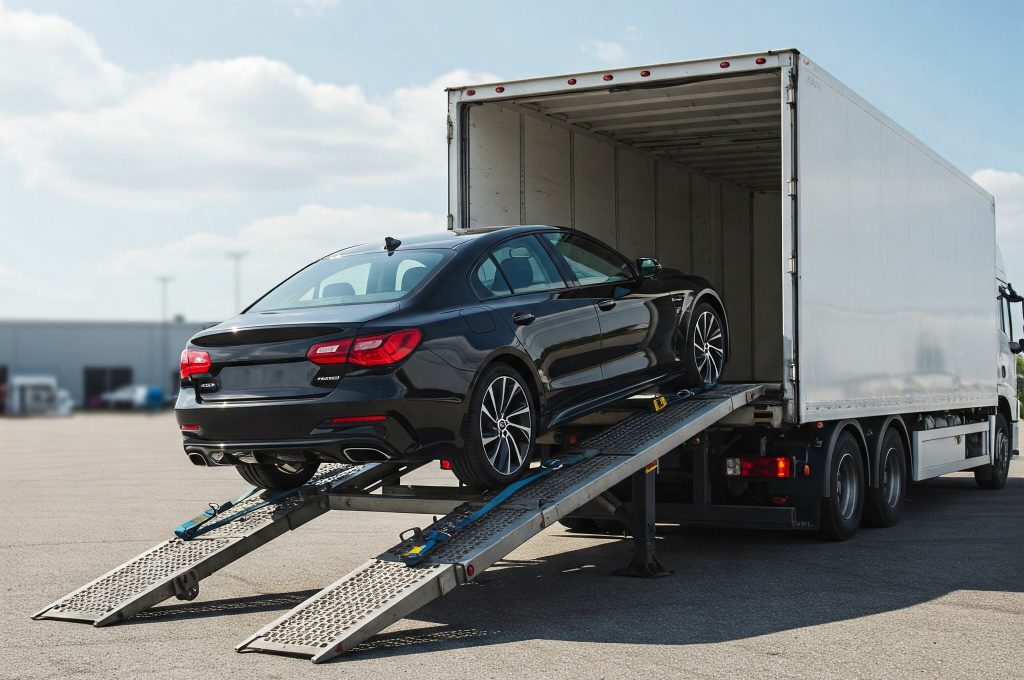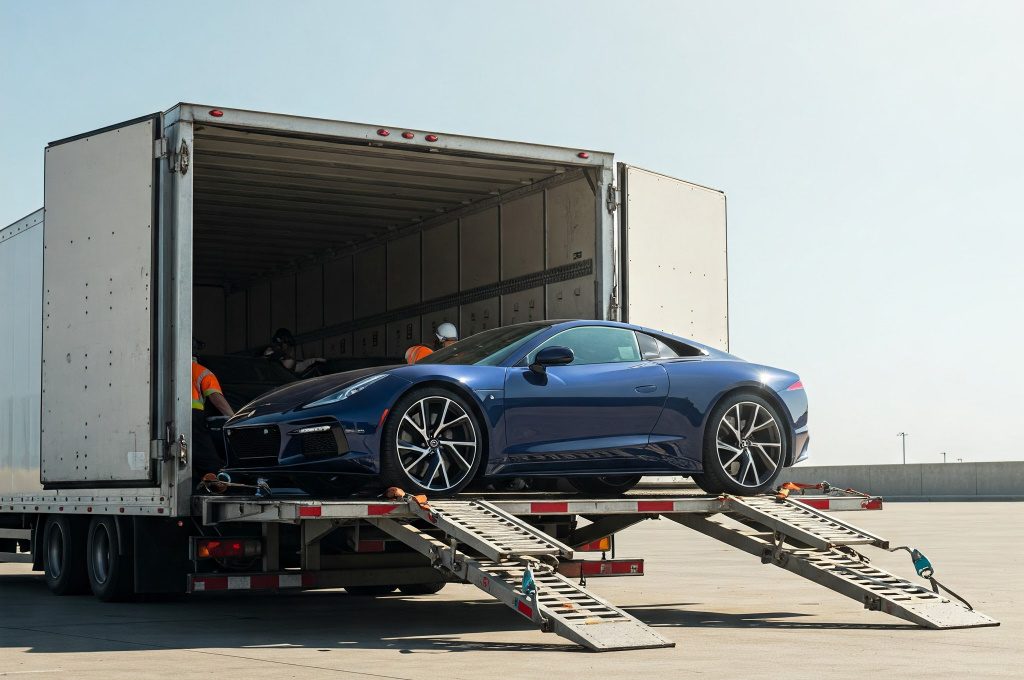What is Enclosed Auto Transport
When transporting your vehicle, you want to ensure it reaches its destination in the same condition it departed in. This is where fully enclosed auto transport services come into play.
Enclosed auto shipping offers the highest level of protection for your vehicle during transit. Shipping on an enclosed carrier ensures that your vehicle is fully shielded from the outdoor elements that would typically affect an open carrier.


a hassle-free experience
Our enclosed auto shipping service makes it easy to transport vehicles from your pickup location to your delivery destination. This service accommodates a wide range of needs, including classic car transport, luxury vehicle shipping, sports car transport, and more. The increased security, and enhanced product safety and protection of enclosed auto transport make it the perfect option for safe vehicle transportation.
Cost of Enclosed Auto Transport
Several factors influence the cost of enclosed car shipping services, including the type of vehicle, your chosen transport method, and your timeline. To secure the lowest price for this transport service, consider selecting enclosed car transport and maintaining flexibility with your pickup dates. While cost matters, it’s essential to prioritize a reliable, safe, and customer-focused service provider.

Benefits of Door-to-Door Auto transport:
Carrier Availability
With certified open and enclosed carriers nationwide, we offer convenient door-to-door auto transport services.
No Up-Front Payment
You won’t pay anything until a carrier is confirmed for your route and your shipment is scheduled for pickup.
Best Pricing
Our online quote calculator considers all factors to give you the most accurate and cost-effective transport estimate.
nationwide coverage
We offer direct service nationwide—our carriers will pick up and deliver your vehicle at your home or business.
